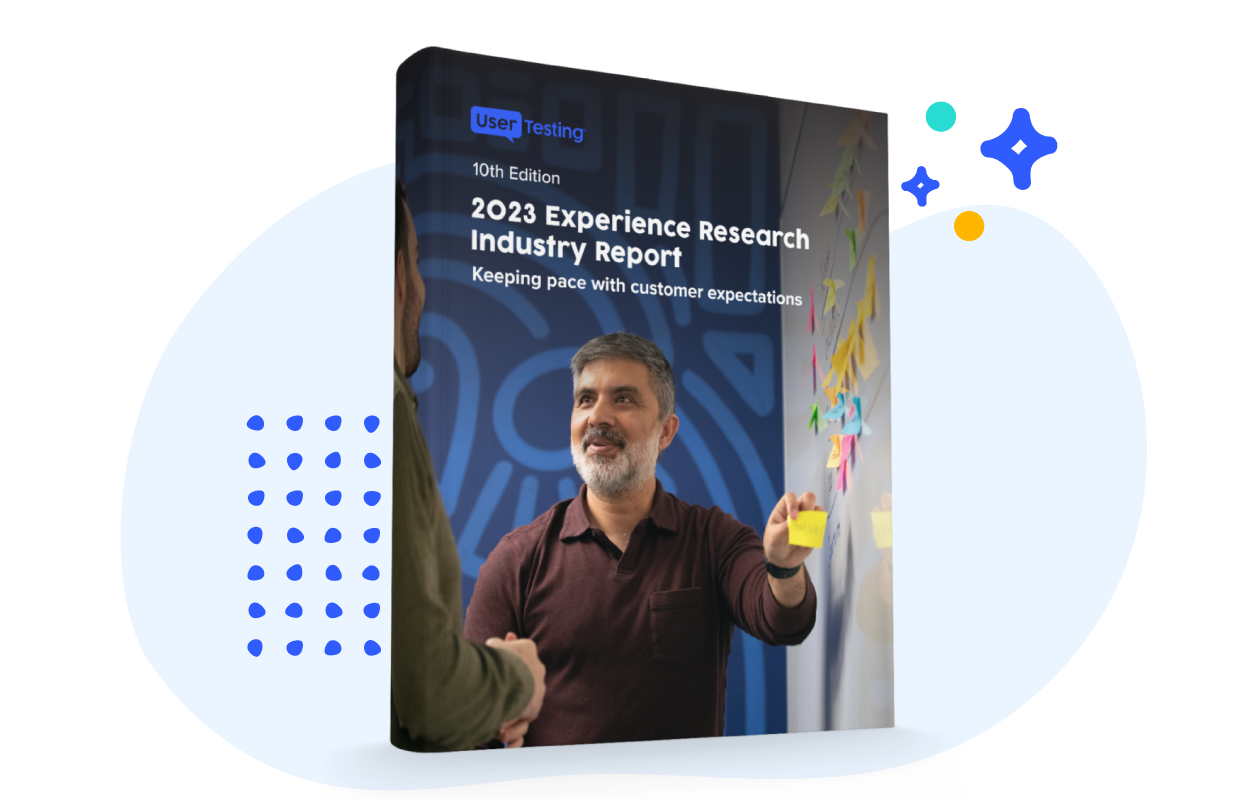
What is the Jobs-to-be-Done framework?

In design and technology, it's easy to get captivated by new ideas. However, focusing solely on innovative ideas can lead to neglecting the real goal: creating value by understanding customers' desired outcomes. The Jobs-To-be-Done (JTBD) framework offers a way to shift from idea-centric to value-centric thinking by focusing on the progress customers seek, not just the products themselves.
This is because humans don’t care about products – we care about progress. We don’t want to buy better cameras – we want to become better photographers. And while we focus on designing the “thing”, the customer’s focus is somewhere else entirely: on the outcome they’re seeking.

Product delivery is not the endgame – value is. And as part of multi-disciplinary, cross-functional teams tasked with creating value, we should all have the means to evaluate our work by simply asking: “are we improving our customer’s ability to get to their desired state?”
How exactly do we answer that question? Well, one helpful vehicle is Jobs-to-be-Done.
What is ‘Jobs-to-be-Done’?
Jobs-to-be-Done (JTBD) serves as both a mindset orientation and an innovation framework.
Although it has gained traction in the design industry recently, it’s not a new concept. Founding figures like Clayton Christensen, Anthony Ulwick, Bob Moesta contributed to JTBD decades ago to transform the art of innovation into a framework, moving away from ideas-first product development.
Economist Theodore Levitt laid the groundwork in the 1960s with his assertion, "People don’t want to buy a quarter-inch drill, they want a quarter-inch hole.” This simple, but profound statement shifts the focus from studying the product or the customer to studying the job that needs to be done.
True design-led, as opposed to technology-led, innovation stems from discovering better ways for people to complete their "jobs" – whether it's cheaper, faster, easier, safer, or another measure of success they value.
In situations where research becomes murky and insights are difficult to pinpoint, or where stakeholders prematurely run with ideas, JTBD can unify the team, clarify focus, establish a common language, and enhance ideation.
However, it’s important to note that JTBD is not a one-size-fits-all solution. There are varying interpretations within the industry. We aim to highlight these differences and show how JTBD should be used – more as a perspective than a comprehensive method.
Breaking down 'Jobs-to-be-Done'
#1. People ‘hire’ products and services to get something done
Jobs-to-be-Done (JTBD) relies on core principles, and the first is that people don’t buy products and services – they hire them to get a job done.
This job can represent overcoming some problem, achieving a personal goal, avoiding a situation or carrying out some activity. According to Jobs Theory, when a better solution emerges, customers will fire the current one and switch. This idea isn’t entirely new. Alan Cooper and his peers introduced Goal-directed Design years ago, urging us to focus on customers’ desired end-states. Some argue JTBD is just a rebranding of this approach, and perhaps it is. is.

However, JTBD holds value as an orientation. As design becomes a problem-solving and value-creation tool across industries, its rigor has sometimes been diluted. Personas have turned into demographic-based marketing tools, and journey maps often focus on what users are doing without considering why.
Anything that prompts me and my team to ask, “What is our user really trying to accomplish here, and how can we help them?” is valuable.
#2. The job is the underlying purpose
The key to JTBD is defining the job – understanding what exactly your product, service, or feature is being hired for.
There are multiple approaches to JTBD.
One perspective defines the job as the progress users seek to make and innovates by resolving the struggles they face in pursuing that progress.
Another perspective identifies the job as a higher-order process (where your product is one of several they rely on) and innovates by meeting unmet needs along that process.
Consider premium cars from the perspective of a manufacturer we’ll call Nexus. Nexus sells cars through flagship venues, dealers, and online. Some teams may focus on helping customers buy cars – improving the dealership experience, optimizing web platforms, simplifying financing, or communicating new features and benefits. But the customer’s underlying job is not to buy a car – it’s not even to own or drive a car. So, what is their job-to-be-done?
One JTBD camp suggests uncovering the underlying progress customers seek, framed as ‘Help me’ statements. By interviewing ‘switchers’ (those who recently adopted or abandoned the product) about their purchasing history, we can uncover their true job and the struggles they face.
Some car customers might implicitly say, “Help me enjoy superior mobility comfort”; others might say, “Help me unleash my alter ego” or “Help me keep up with the Joneses.” Focusing on the first job around mobility comfort might reveal that customers worry about choosing a car that provides enough comfort in different contexts (city errands, weekends away, etc.) or about ongoing running costs.
The second JTBD camp might ask us to contextualize buying a car in a higher-level job – “Get from A to B conveniently and reliably,” for example. In this process-oriented job, there are steps around accessing and being transported in a vehicle, but not necessarily buying or owning it. Evaluating unmet needs might reveal that customers want to better match the car type to the trip type or reduce the time and money spent on vehicle upkeep.
Each approach could lead Nexus to innovate similarly: an on-demand car service that replaces ownership with access. Customers rent a Nexus as needed, with the freedom to select the right car for their trip, avoiding storage, insurance, and maintenance hassles.
While similar ends do not prove similar means, JTBD approaches have nuanced differences. Still, at its core, JTBD focuses on the customer’s underlying purpose – not car buying or ownership, but mobility. To ensure you’ve framed your JTBD correctly, consider:
- Has this job been stable over time? (If not, your job may mention a modern solution)
- Can we see target customers thinking, “I need to get this job done today”? (If not, your job may be too granular)
- Would solving this job align with our company’s capabilities and business objectives? (If not, your job may be too abstract)
#3. Jobs have functional, emotional and social dimensions
Jobs are not purely functional; they also have emotional and social components.
Recognizing these dimensions is crucial as they can drive behavior in specific contexts. For instance, Uber offers different service levels because getting from A to B is too simplistic a framing. At times, cost savings may lead you to choose Uber Pool; other times, you might select Uber Black to impress a date. Acknowledging all job dimensions can improve the product and experience.
Borrowed from Jobs Theory, the functional, emotional, and social dimensions can be framed as follows:
- Achieve/avoid…
- Feel…
- Be perceived as…
Consider Nexus. In the job of getting from A to B, functional dimensions might include “help me minimize time spent looking for parking”; emotional dimensions might be “help me feel good about my environmental impact”; and social dimensions might be “help me be perceived as a trendy urbanite.” If these dimensions are significant, customers might buy a Vespa or hire a bicycle instead of using Nexus’ on-demand car service.

Understanding the various job dimensions and unmet needs in different contexts can uncover real opportunities to deliver value that resonates both functionally and personally.
There’s much more to JTBD. The concept of jobs and ‘job executors’ is used to size markets, define competitors, and drive product messaging. One JTBD camp relies on switch interviews to uncover the four forces of progress; another maps out job steps and quantifies need importance and satisfaction at each step.
Even without delving into these details, JTBD holds value as an approach. It helps researchers and designers align on language, keeping customer outcomes – not company outputs – in focus.
JTBD helps us appreciate the broader context of users’ behaviors, enabling us to innovate by being human-first rather than technology-first. It unlocks value creation when we help users make the progress they seek – getting jobs done better, more cheaply, more quickly, more predictably, and more conveniently.






